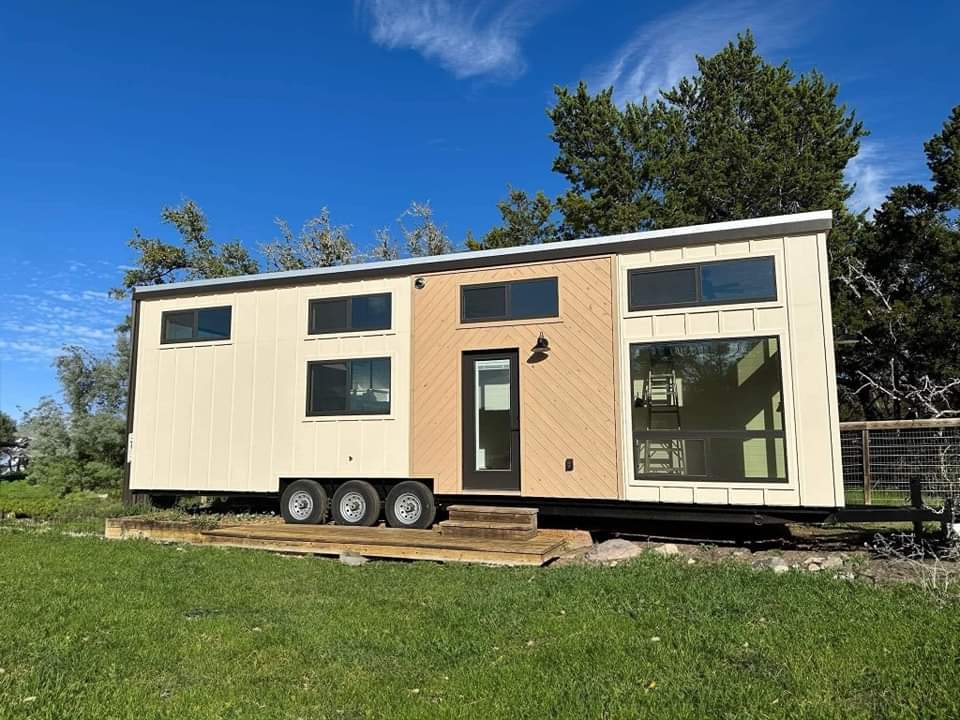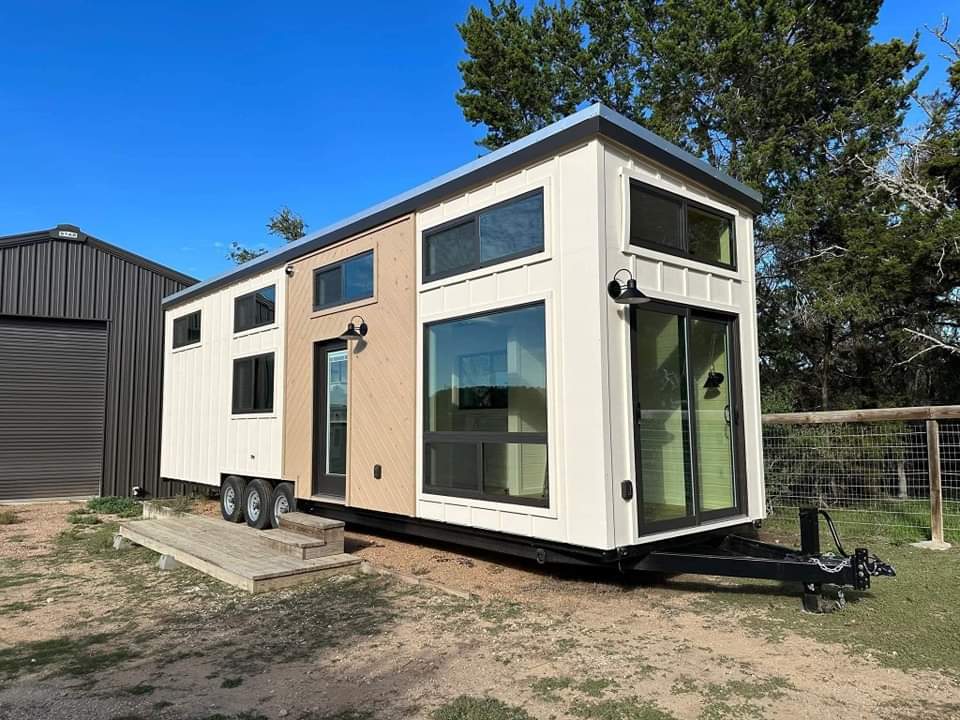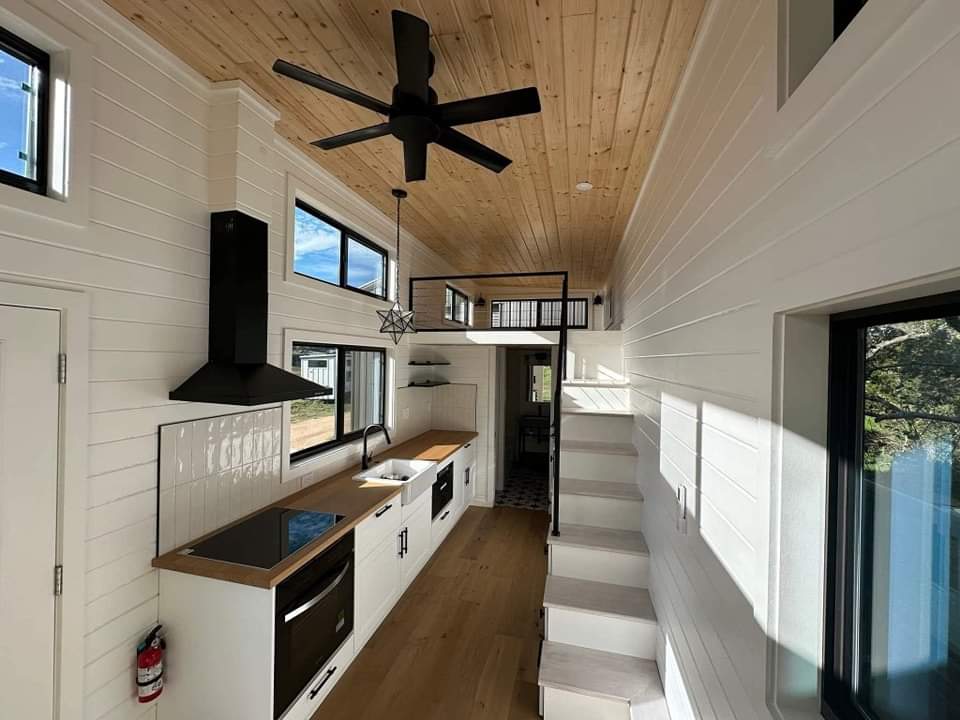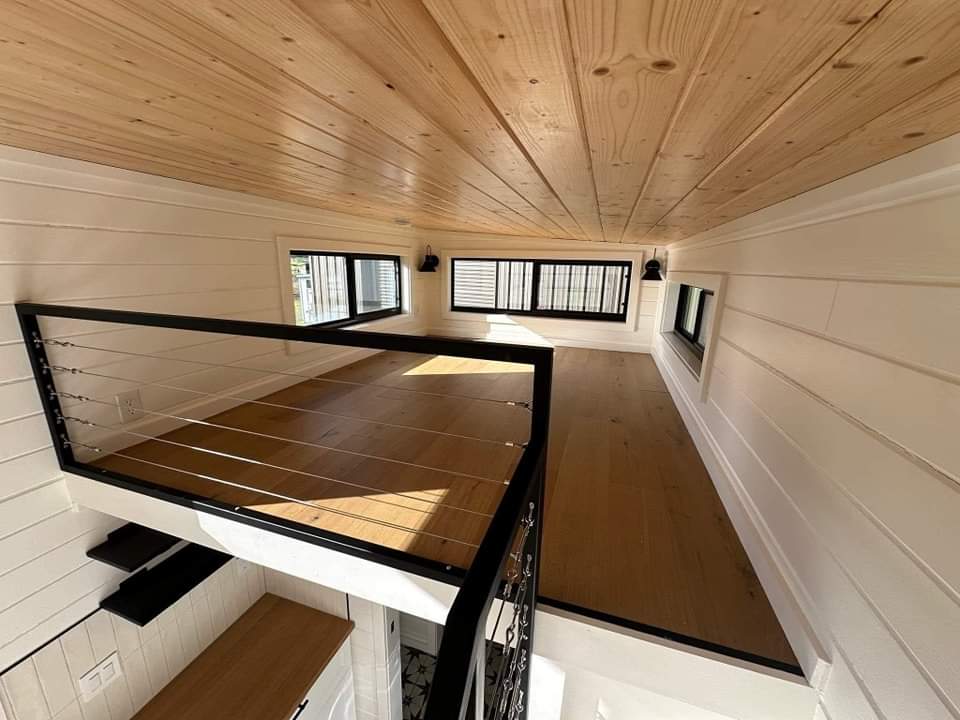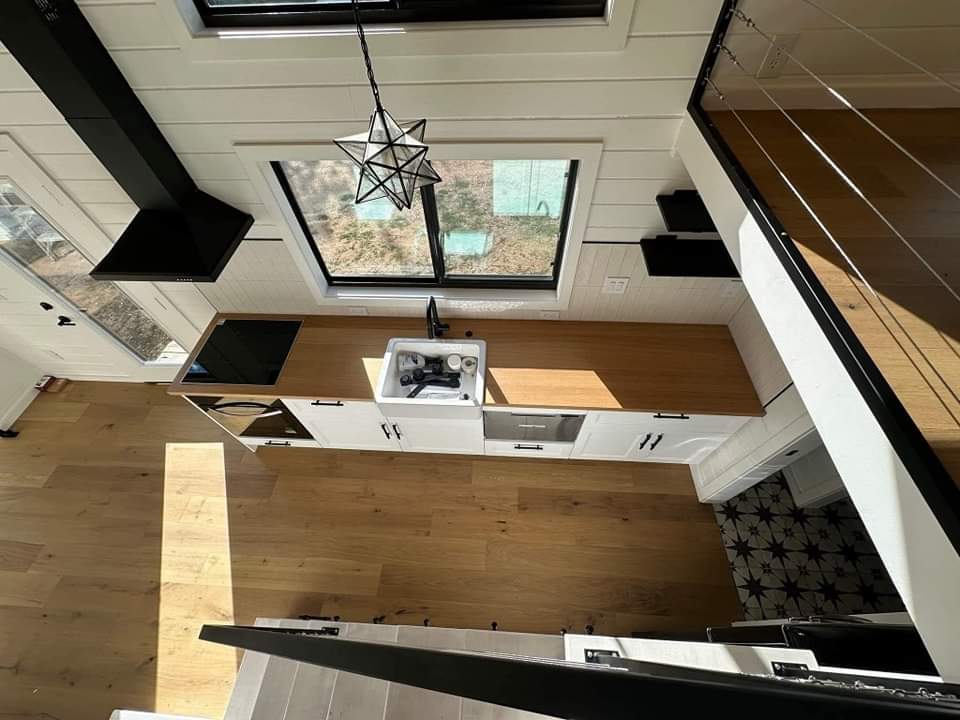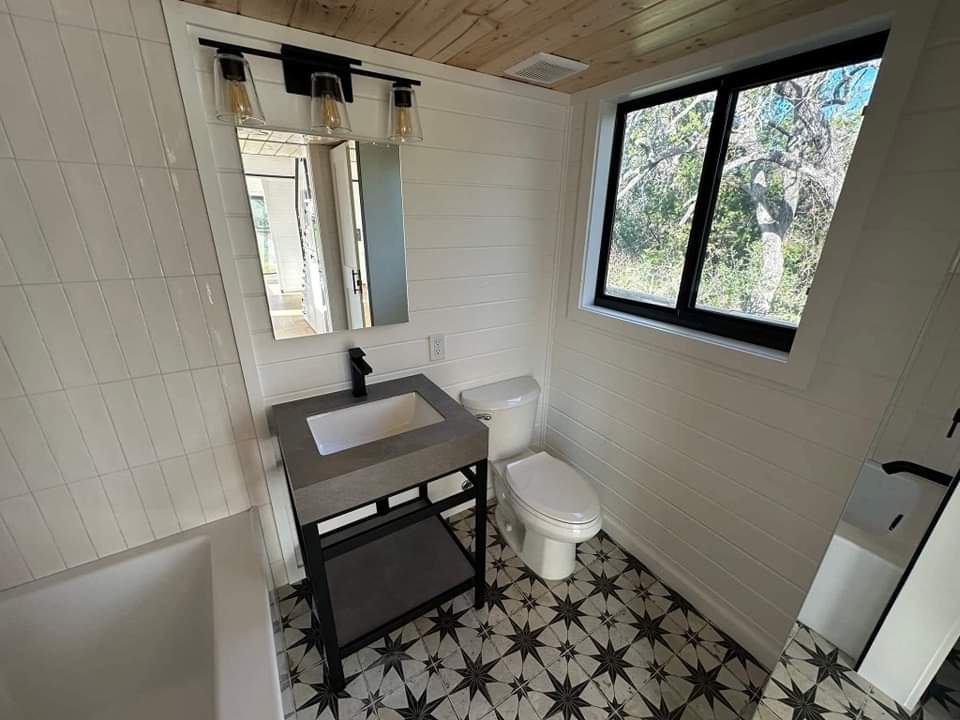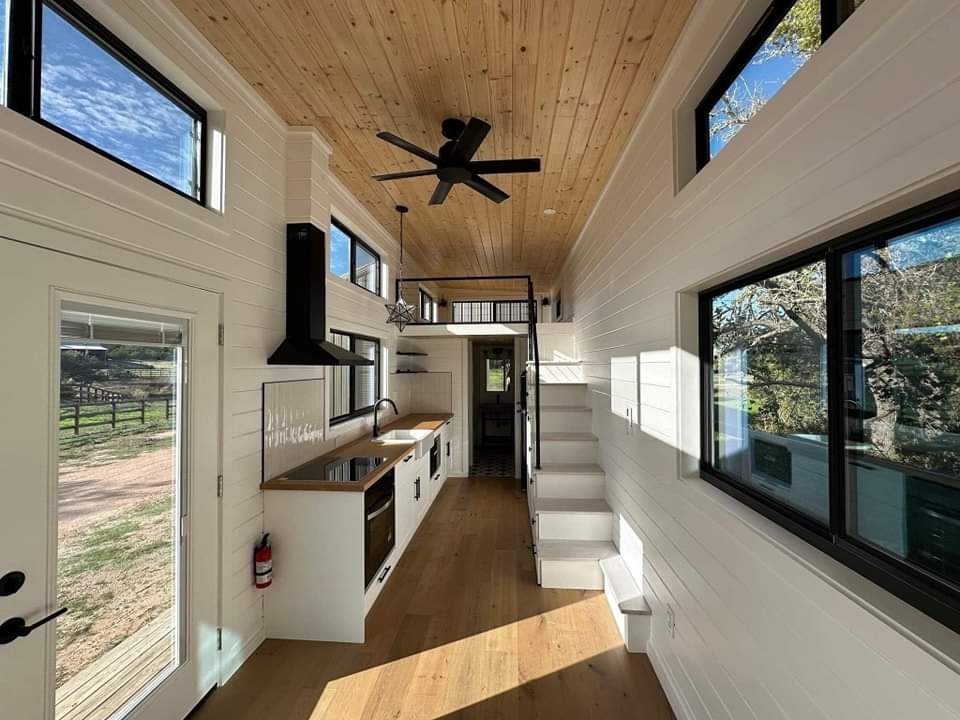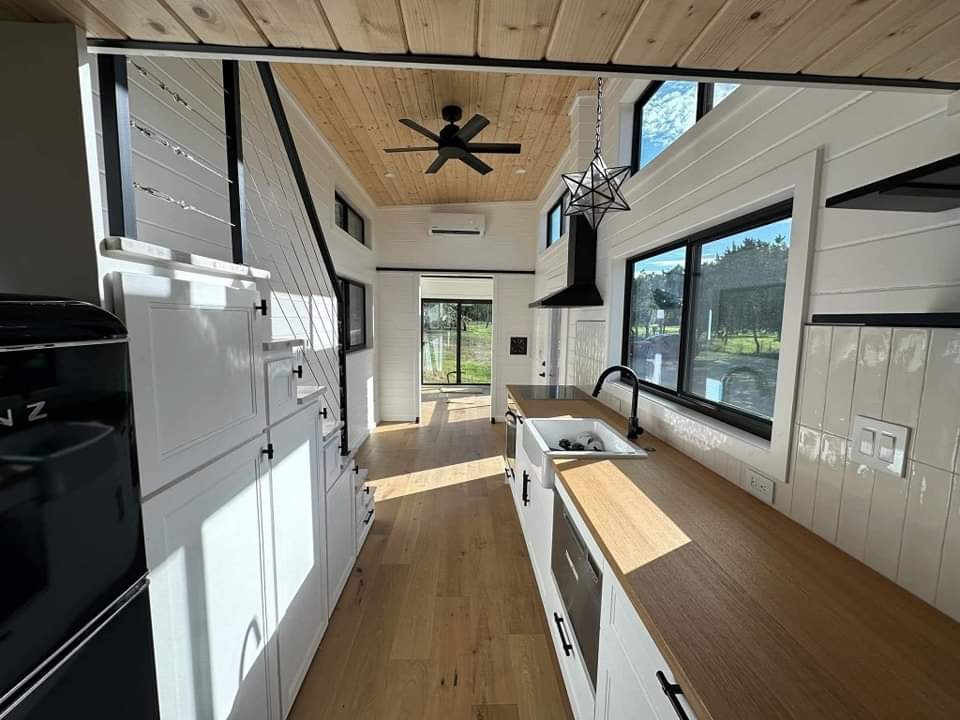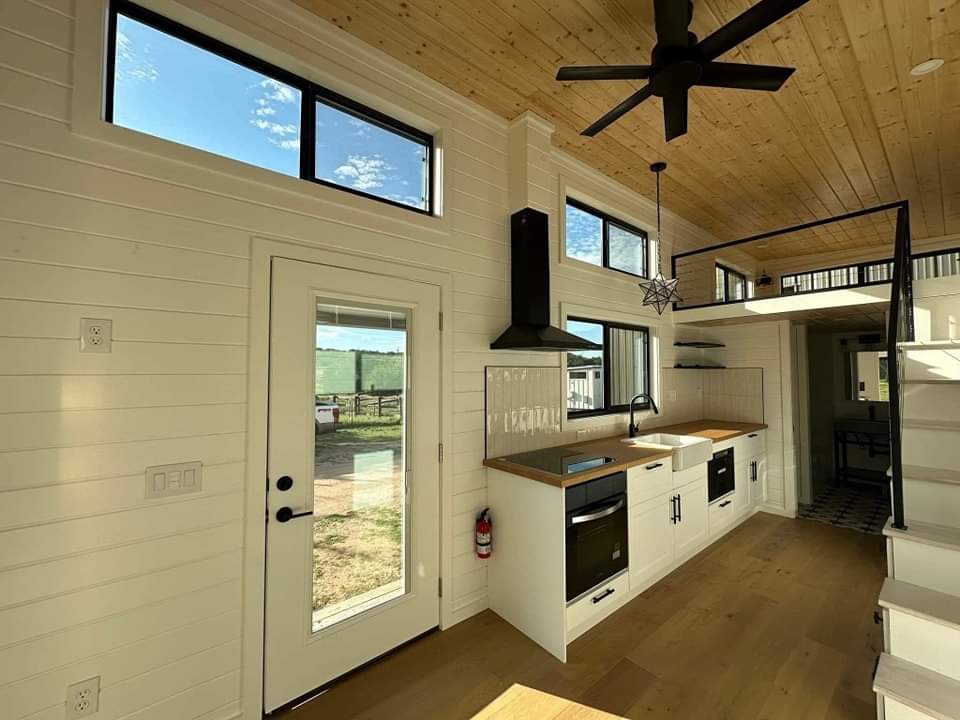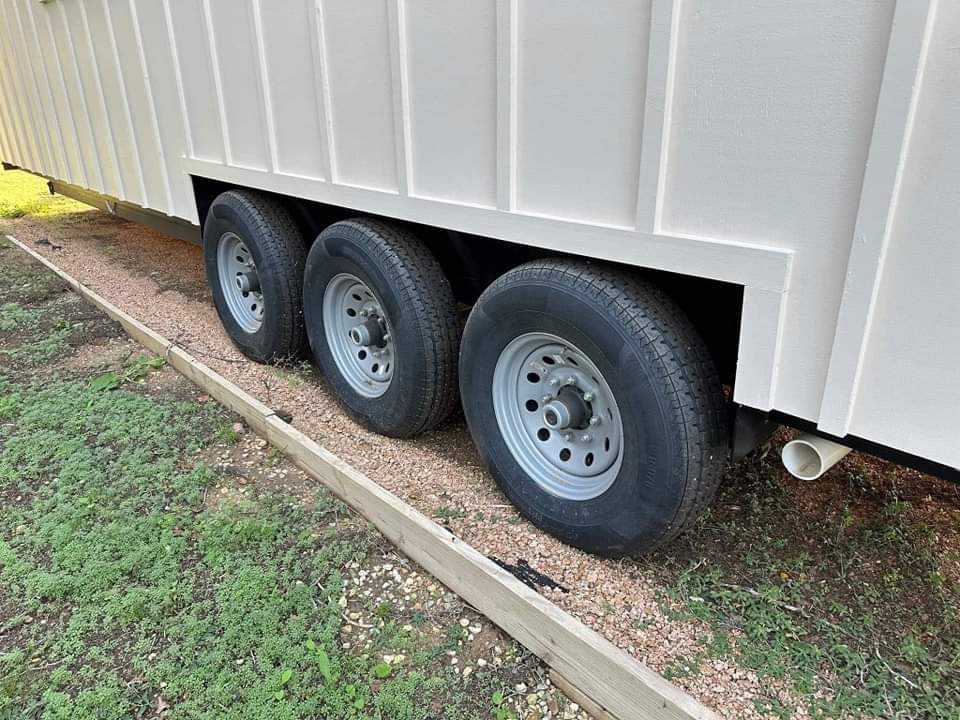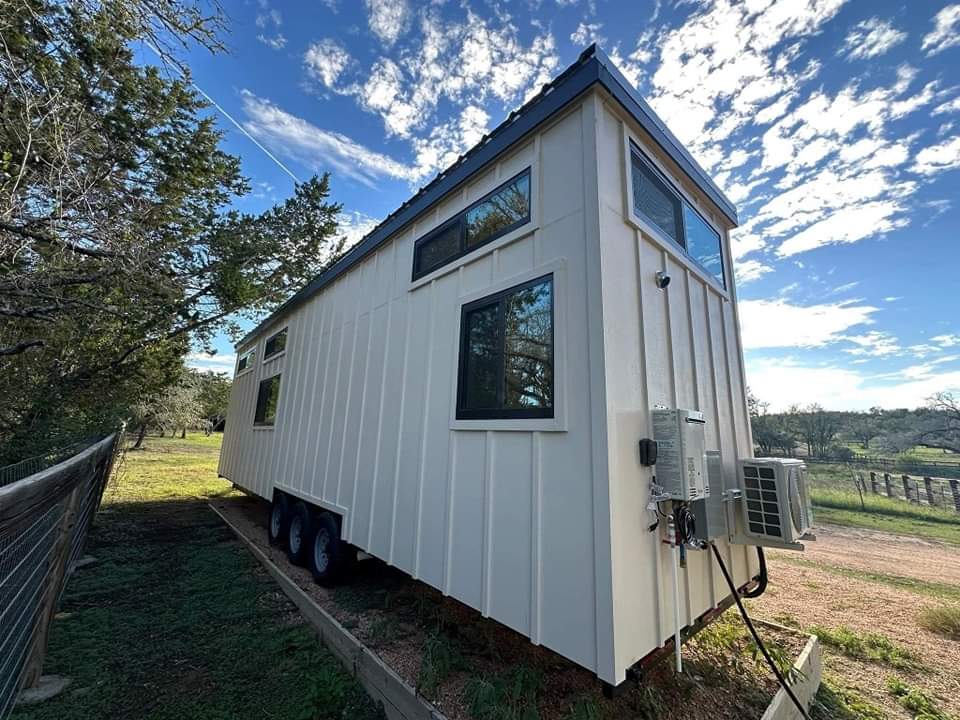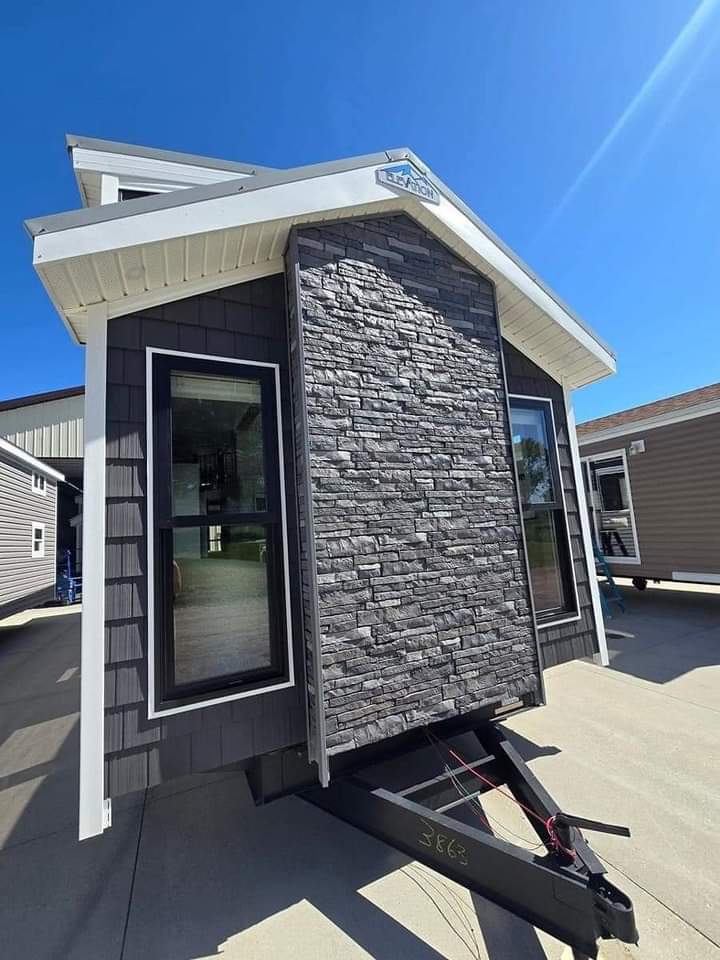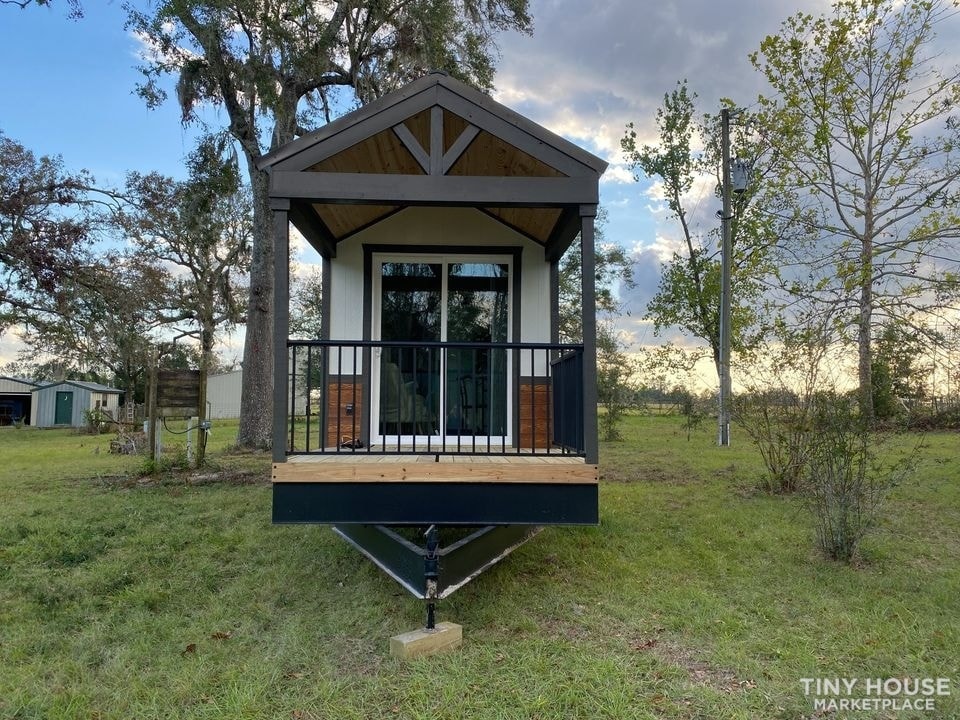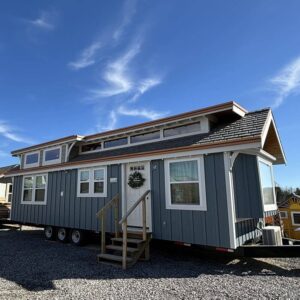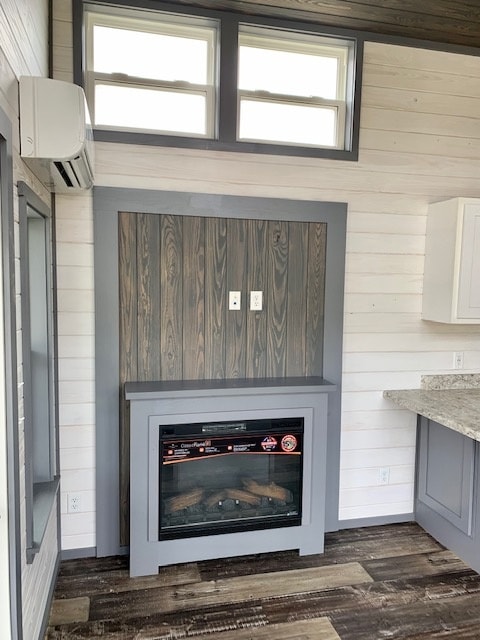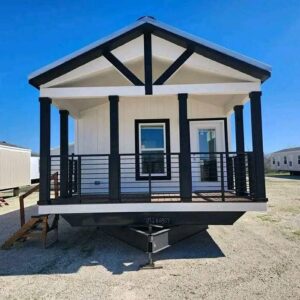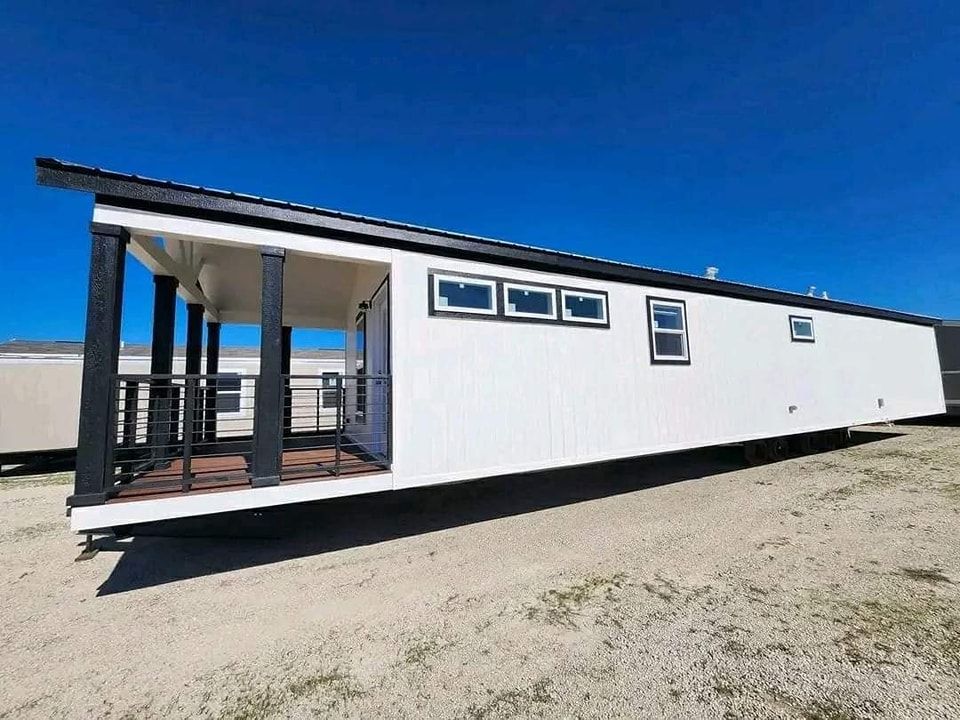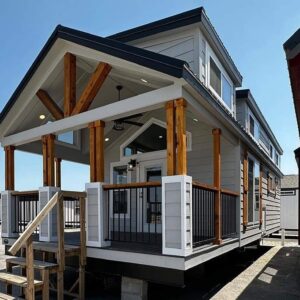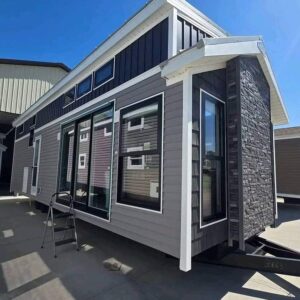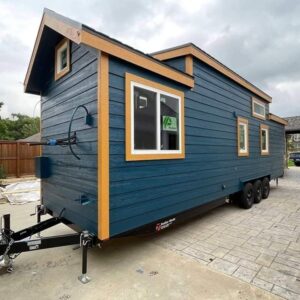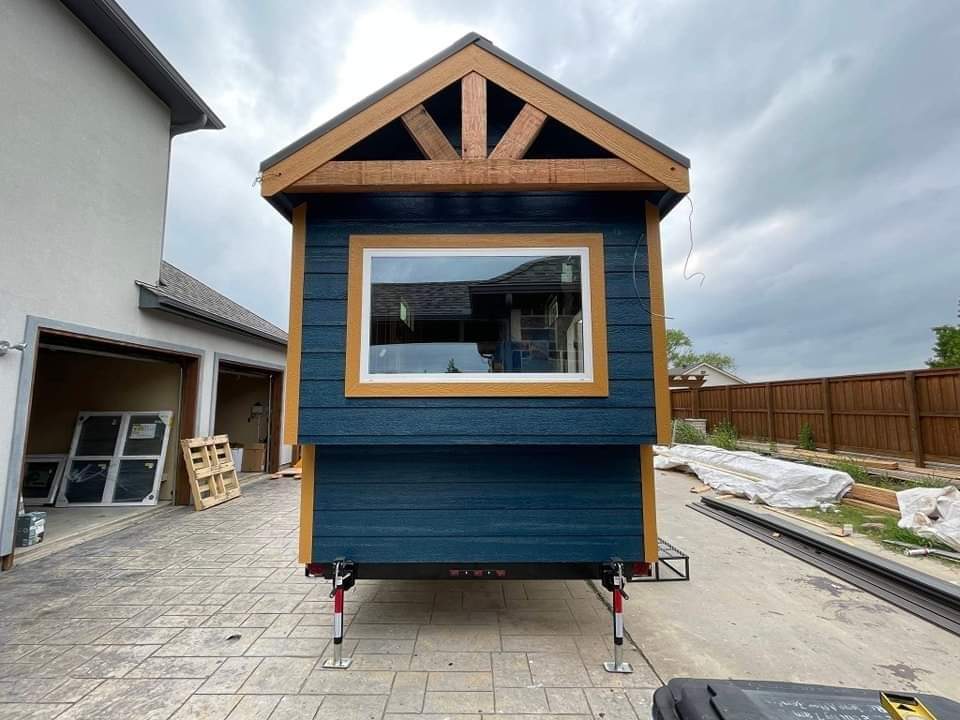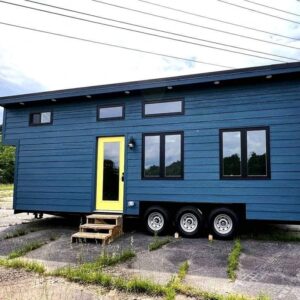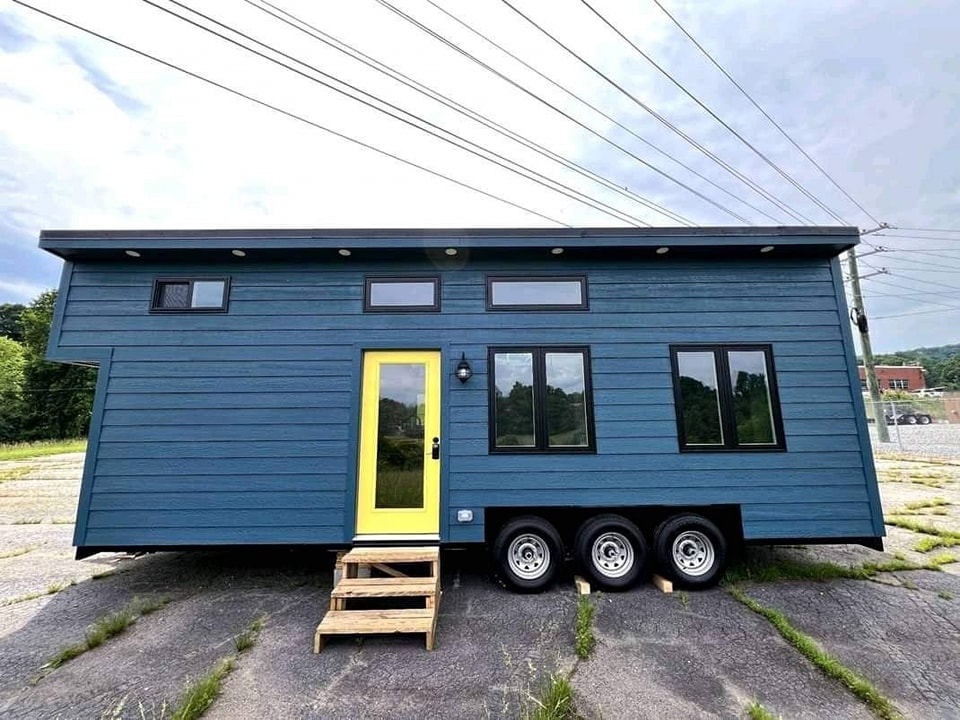The Gateway 36
$30,000.00 Original price was: $30,000.00.$21,500.00Current price is: $21,500.00.
Interested in one of our tiny homes? Contact us today for more details! Our team at Brooks Tiny Home Builders is here to answer all your questions and help you find the perfect tiny home that fits your needs. Call us or email us via the contacts on our website. Don’t forget to follow us on social media for the latest updates, new listings, and design inspiration. We look forward to helping you start your tiny home journey
The GETAWAY – 36′
– Price: $21,500
Down payment $1500
• (3) – 7000 lb axles with brakes
• Custom steel handrail & loft guards
• 22 SEER mini-split HVAC (heat & cool)
• Rinnai LPG tankless water heater
• Bronze aluminum low-e, argon filled, tempered windows
• Galvalume metal roof w/ sheet foam underneath & full ice & water shield
• Closed cell spray foam subfloor, r19 ceiling batts + r5 sheet foam, r15 in walls.
• 24″ wall oven, stainless fridge, induction cooktop & vent hood
• Toe kick storage
• Custom stairs w/ storage
• PAX wardrobe
• Unitized Washer/Dryer
• Dual flush toilet
• Chalkboard pocket door
• T&G walls and ceilings (painted & polyurethaned)
Some of the characteristics of a small home are:
It can be designed in a variety of styles and formats.
Efficient use of space and may not be as compact as a tiny home.
Often designed for a specific purpose or lifestyle, such as retirement or vacation homes.
It may feature multi-functional rooms or furniture.
Pros of Living in a Tiny Home
Many of the tiny living converts will talk your ear off about all the ways their life has become richer after purging their material possessions. Tiny living is generally:
1. More affordable
Tiny homes can be expensive if you go all-out with high-end building materials and amenities, but on a whole they’re much more affordable. The Spruce estimates tiny homes cost about $60,000 on average . The median price of an existing traditional home is currently $243,400.
2. Mobility
Many Millennial digital nomads see a portable tiny home as a huge plus. People that want to move around before setting down roots will find that a tiny home is a more livable than an Airstream.
3. Smaller eco-footprint
Environmental advocates enjoy that a smaller living space equates to a smaller eco-footprint.
4. Quicker to build
Because of the scaled down size, tiny homes tend to be built faster than a conventional home. You can even find builders that offer customizable prefab designs that can be built in a few weeks.
Related products
AVAILABLE TINY HOMES
AVAILABLE TINY HOMES
AVAILABLE TINY HOMES
AVAILABLE TINY HOMES
AVAILABLE TINY HOMES
Cardinal” 399 sq Foot RV Park Model Tiny House with 1 bed/1 bath & a Loft
AVAILABLE TINY HOMES


